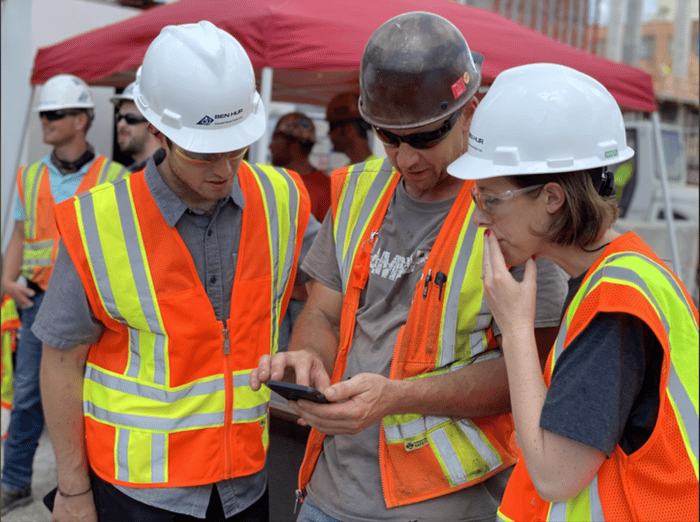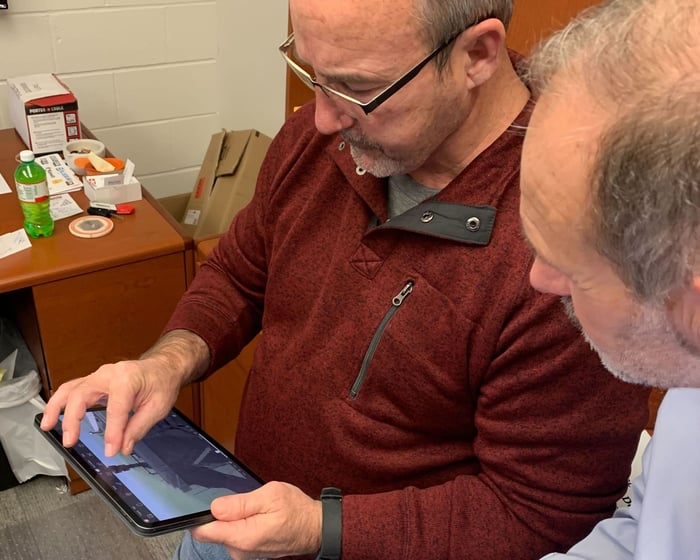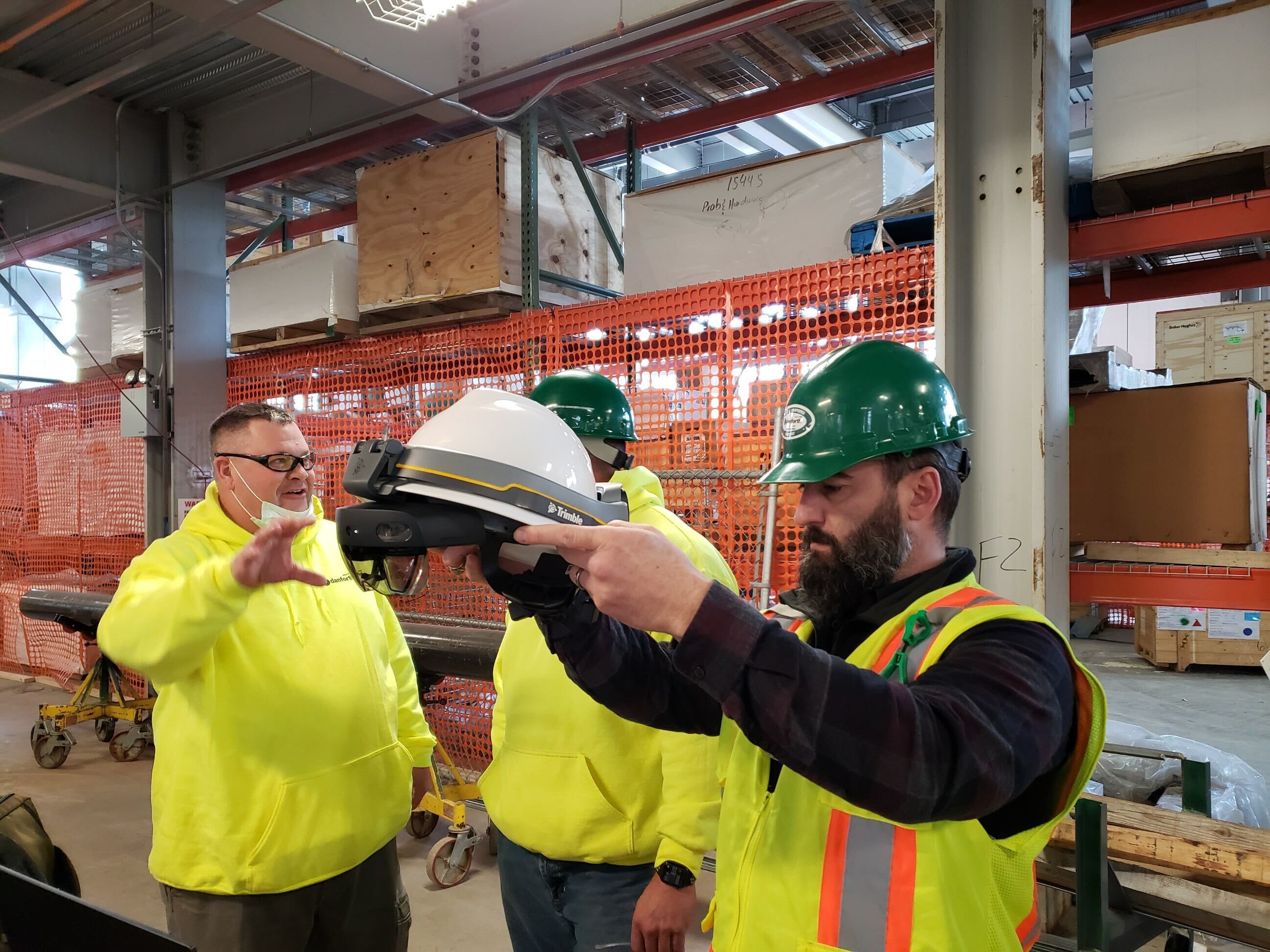I’ve been involved in both field and office operations in construction. And I’ve both been supported and felt harassed by technology. Now, I use those experiences to help people on job sites to eliminate the fear of tech by helping them to understand how to adopt it successfully and see the benefits.
To start you off, here’s a question - if DeWalt came out with a new drill that doubled productivity, would you stick with your old drill because you’re used to it?
When it comes to tech in the field, most people would probably say they’d “continue the madness” in this situation. It’s an understandable approach, but it’s also a lot like the Cleveland Browns trading all their early draft picks for one guy who might not even get to play. You’re really gambling with your future ability to win and execute on business, especially when you know that all the mom and pop shops are adapting in order to get an edge.
Early adopters win
DADO is one of many tools that started with a single, contained concept. It has become what it is today because of early adopters - companies like Binsky & Snyder and Wm. T. Spaeder, who chose to adopt the tech early, provide feedback, and get the product to meet their specific needs.
There’s a huge advantage - now, not only do these companies have a tool that is tailored to how they do business, but they also have a team trained and comfortable with the general concept of digital documentation and tech on site. Because the field teams now feel confident that tech tools can improve their productivity, they’ve opened the door to the possibility of adopting all kinds of tools, such as Revizto, Navisworks, and Procore.
 DADO's product team in the field with Ben Hur in St Louis
DADO's product team in the field with Ben Hur in St Louis
Early adopter tips to make field tech adoption easier
So you’re not an early adopter - but you can still win when it comes to adopting tech in the field. Early adopters learned these 3 lessons by making mistakes, so you don’t have to:
1. Train the trainer
The easiest way to get a technology solution rolled out on a job quickly is to designate a project leader as the field tech liaison. Train them - heck, over-train them. Give them training on everything you want to use on the project, and a little bit more. This opens their eyes to possible ways to use the tech that you wouldn’t imagine.
These were some of the best days I spent in construction, exploring the new tech and saying “Whoah I didn’t even know you guys did that. Here, let’s try using it like this.” For example, I figured out how to use Revitzo in a bunch of ways, just because a foreman asked to see field welds.

Construction Management professors at Ohio Northern University check out new ConTech to help students stay up-to-date
2. Get creative
No tool is exactly what it set out to be at the beginning, largely because people like you and I have specific problems to solve, and the tools our managers give us to solve them aren’t always the perfect fit. Ok, so the workflow you develop with the tool you have might not be perfect. But it might open the door for a better tool that fits your needs, or result in further feature development for the tool you already have. Tools evolve and don’t have to be used exactly as intended - have you seen what people are doing with HoloLens?!
3. Crowdsource solutions
Everyone thinks they have a competitive advantage when they figure out how to be profitable with a tool, but honestly, there’s always someone using it more efficiently. Crowdsourcing solutions is great for our industry in general, and events like Autodesk University, MEP Force, and Advancing Prefabrication exist so we can share expert knowledge.
.jpg?width=800&name=Image%20from%20iOS%20(3).jpg)
Onsite training for our customers' field teams
After all, we know tech makes a difference to the bottom line. We just need to make technology in construction as common practice as having the latest drill on every site.
CATEGORIES
- Construction Technology (23)
- Construction Document Management (14)
- Construction Document Search (13)
- DADO (8)
- Document Management Systems (8)
- Intelligent Search (6)
- Smart Forms (4)
- intelligent document search (4)
- File Search (3)
- Insider (3)
- Productivity (3)
- Search Engines (3)
- VDC (3)
- tech friction (3)
- Cost Control (2)
- Ctrl F (2)
- Customer Stories (2)
- Digital Process (2)
- Opinion (2)
- Risk Management (2)
- Smart Documents (2)
- Virtual Design and Construction (2)
- field (2)
- integrations (2)
- lean construction (2)
- safety compliance (2)
- Collaboration (1)
- DMS (1)
- IGI (1)
- OSHA (1)
- Optical Character Recognition (1)
- Project Management (1)
- Safety (1)
- TAUC (1)
- document administration (1)
- index documents (1)
- mechanical engineering (1)
- rework (1)
- voice driven (1)
Archives
- October 2020 (5)
- February 2021 (4)
- April 2021 (4)
- June 2021 (4)
- July 2021 (4)
- July 2019 (3)
- September 2020 (3)
- November 2020 (3)
- December 2020 (3)
- January 2021 (3)
- March 2021 (3)
- May 2021 (3)
- August 2021 (3)
- March 2022 (3)
- May 2022 (3)
- October 2021 (2)
- January 2022 (2)
- February 2022 (2)
- March 2020 (1)
- April 2020 (1)
- July 2020 (1)
- August 2020 (1)
- September 2021 (1)
- November 2021 (1)
- December 2021 (1)
- April 2022 (1)
- July 2022 (1)

